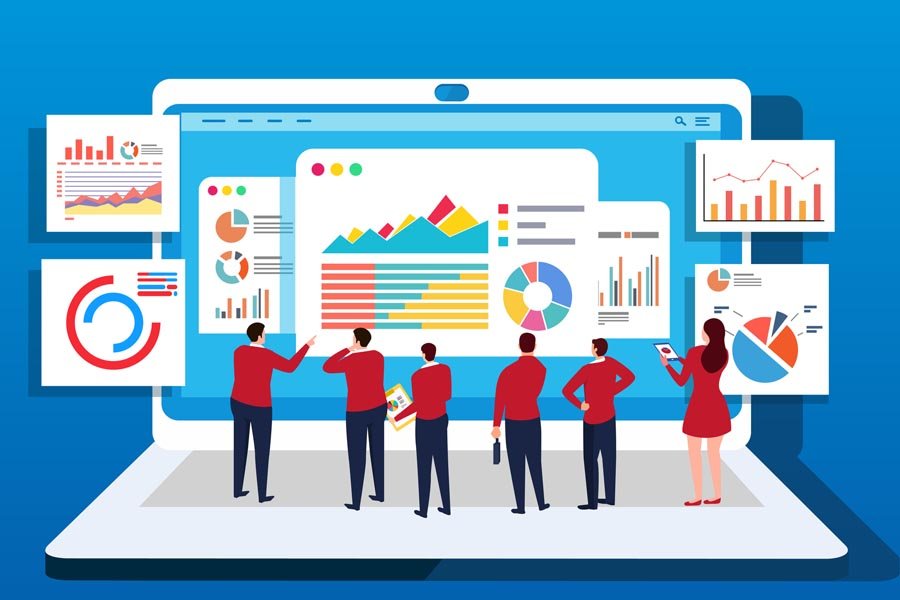The effect of data analytics can be seen in virtually every industry. Digital accountants will continue to implement analytics into their infrastructure. Traders will continue to use it to understand various trends. And while 97.2% of companies say they are investing in big data and analytics, only 24% describe their organizations as data-driven.
So, how can companies utilize data analytics? In this article, we’re examining how companies can use data analytics to their advantage. Whether you’re a managed IT service provider or simply interested in the future of how we interpret data, this article contains something useful and interesting for everyone.
What Is Data Analytics?
Data analytics shows up in virtually every industry you come across. It is one of the most commonly used terms in businesses today. Companies around the world produce vast amounts of data every day. Whether through log files, web servers, transactional data, or various customer-related data, the stream is near infinite.
How companies use this data depends on their industry. Data analytics describes the process of data analysis from large data sets to uncover hidden patterns and trends, and create strategies and directives based on that analysis. Data analytics can significantly impact your bottom line regardless of your industry. But how should you use it?
How Do You Use Data Analytics?
Improved Decision-Making
Data analytics eliminates most guesswork and manual tasks. Whether you need to choose the correct content, plan marketing campaigns, or develop new products, organizations can use insights gained from data analytics to inform their business strategies across their organization. With more insight into the impact of decisions, companies can improve customer satisfaction and standardize procedures.
Improved Customer Service
Data analytics tailors your customer experience according to the consumers’ needs. It personalizes your relationships with your customers and reveals information about their interests and habits so you can better cater to those needs. It also helps you create better recommendations about products and services.
Improved Efficiency
Data analytics can streamline numerous processes and help you save money while boosting production. With a more thorough understanding of your audience, you can reduce the time it takes to create ads or content that don’t align with your audience’s tendencies.
Better Marketing Campaigns
Data analytics give you insights into your marketing campaigns. They help you tune them to produce outcomes and expand your reach to other consumers who are more likely to interact with a campaign to convert your leads. Moreover, advanced analytics like data commercialisation provide significant insights and discover new opportunities out of data assets you earned through the lifespan of your business.
How Do You Implement Data Analytics Into Your Organization?
Now you understand the benefits data analytics offer, it’s time to shift into how data analytics can implement into your business.
Steps to Data Analytics
1. Diagnose the Problem
You can’t implement effective data analytics without first diagnosing the problem you face. To plan a solution, you must understand the issue at hand. Whether you’re an eCommerce company that encounters issues such as returns on items, or you’re a managed IT service provider looking to streamline your client’s infrastructure, you need to understand the problem at hand before taking action.
2. Data Collection
After your diagnosis, you should collect business data and compile it in the proper archives. Without organized data retrieval, you render data analytics futile.
3. Data Cleaning
When you compile data, it’s messy. It will contain unwanted values and it’s not suitable to analyze. You need clean data that eliminates any unwanted, redundant, or missing values.
4. Data Exploration and Analysis
After you obtain the correct data, your next step is to conduct exploratory data analysis. Use data visualization business intelligence, and predictive modeling to analyze, visualize, and predict future outcomes. Apply these methods and you will understand the impact of the data and what strategy to implement as a result.
What Do You Need to Understand About Data?
Before you implement this process, there is one thing we must stress: the formulation of a long-term strategy and goal. Without direction, data is empty. You can only analyze data based on an end goal. Failing to identify the why behind your data will result in bloated storage costs with limited ROI. I.e. You won’t know which data to pull or what to glean from it.
Identify your company goals before pulling data. Ask yourself what KPIs you need to input to accomplish your goals. You can ask questions such as what sources of data you currently have in place and how you can upgrade that data.
After answering these questions and uncovering the purpose of your data, you will be able to create a roadmap that shows any gaps in your business and technology capabilities.
What Are the Types of Data Analytics?
1. Descriptive Analytics
Descriptive analytics only focuses on past occurrences. You can’t derive future projections from this type of data analytics.
Examples of Descriptive Analytics Include:
- Sales performance
- Dashboard reports
- Fraud detection
- Product demand forecasts
2. Diagnostic Analytics
Diagnostic analytics answers why an issue occurred by looking at the factors that led up to the event. It’s not only about analyzing the past. It also incorporates present analysis. This type of analysis leads to understanding a current event from past data.
Some Examples Include:
- Root cause analysis
- Retrospective analysis
- Drill-down
- Regression analysis
3. Predictive Analytics
Predictive analytics uses existing data to determine future outcomes. Companies often use this to develop new products because they will have a better idea of what customers want in the future based on past behaviors.
Some examples:
- Direct marketing
- Customer pricing
- Retail sales forecasting
4. Prescriptive Analytics
Prescriptive analytics analyzes how you can use past trends and data to create future directives. It is most helpful when optimizing internal resources and identifying new business opportunities. You can also use it to make decisions and provide recommendations that let others build better and faster decision-making procedures.
Prescriptive analytics might include:
- Analytics surrounding a new or existing product line
- Starting a new product line
- Build a new factory
- Place a bid on a project
- Hire more people in the sales department
- Send targeted ads to customers.
Anymore, it’s not about whether a company should use data analytics. Rather, companies should ask themselves how they plan to use data analytics and which type is best suited for particular situations.
















